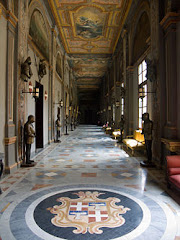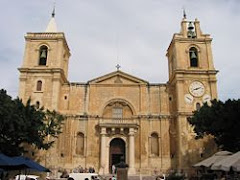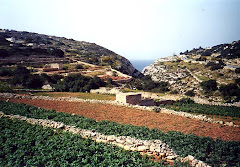




Unspoiled Mediterranean Beaches
Gozo best beaches
There are plenty of beaches to choose from in Gozo...Whether Ramla Bay for its fine golden sand or Marsalforn for its pebbles and kiddies favourite, or Dwejra for the calm, gentle inland sea or Xlendi, teaming with activity as a diving centre and pedalo, boat cruise hire and general fun cove.
There are plenty of hideaway bays too. Whichever you prefer all have a shallow slope into the beautiful Mediterranean sea.
Ramla BeachLocation: Ramla Bay, GozoBeach: Golden fine sand Ramla Beach has been voted many years one of the top 5 beaches in the Mediterranean...
Calypso BeachLocation: Ramla Bay, GozoBeach: Golden fine sand The Calypso Beach is just below the Calypso Cave, probably where Ulysses did his beach walking every morning.
Qbajjar BeachLocation: Qbajjar Bay, GozoBeach: pebble & bouldersThe Qbajjar Beach is one of the preferred beaches for local people....
Salt PansLocation:Xwejni, GozoBeach: salt pans There is a stretch of land and sea between Marsalforn and the rural plots of Zebbug and Ghasri which must be seen for its unique landscape of historical salt mining methods and sweeping dunes.
Xlendi BeachLocation: Xlendi Bay, GozoBeach: sand and pebbles Xlendi is a family friendly bay with safe waters filled with waterfront cafes and restaurants.
Dwerja BeachLocation: Dwerja, GozoBeach: PebblesDwejra is a natural environment, where the swimming is safe for children. The inland bay is protected by cliffs where rare birds make their nests.
Gozo best beaches
There are plenty of beaches to choose from in Gozo...Whether Ramla Bay for its fine golden sand or Marsalforn for its pebbles and kiddies favourite, or Dwejra for the calm, gentle inland sea or Xlendi, teaming with activity as a diving centre and pedalo, boat cruise hire and general fun cove.
There are plenty of hideaway bays too. Whichever you prefer all have a shallow slope into the beautiful Mediterranean sea.
Ramla BeachLocation: Ramla Bay, GozoBeach: Golden fine sand Ramla Beach has been voted many years one of the top 5 beaches in the Mediterranean...
Calypso BeachLocation: Ramla Bay, GozoBeach: Golden fine sand The Calypso Beach is just below the Calypso Cave, probably where Ulysses did his beach walking every morning.
Qbajjar BeachLocation: Qbajjar Bay, GozoBeach: pebble & bouldersThe Qbajjar Beach is one of the preferred beaches for local people....
Salt PansLocation:Xwejni, GozoBeach: salt pans There is a stretch of land and sea between Marsalforn and the rural plots of Zebbug and Ghasri which must be seen for its unique landscape of historical salt mining methods and sweeping dunes.
Xlendi BeachLocation: Xlendi Bay, GozoBeach: sand and pebbles Xlendi is a family friendly bay with safe waters filled with waterfront cafes and restaurants.
Dwerja BeachLocation: Dwerja, GozoBeach: PebblesDwejra is a natural environment, where the swimming is safe for children. The inland bay is protected by cliffs where rare birds make their nests.




















































